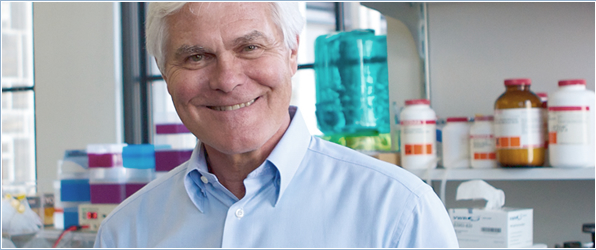John F. Disterhoft, Ph.D.
Magerstadt Memorial Research Professor
Our laboratory studies the neurobiology of associative learning in the young and aging mammalian brain with in vivo and in vitro techniques using eyeblink conditioning, spatial learning and fear conditioning as behavioral model systems.
Many of our ongoing experiments focus on the hippocampus, a paleocortical region involved in transferring information from short- to long-term memory during learning. Single-neuron ensemble recording in the conscious animal is used to localize and functionally characterize the cell types involved in laying down and consolidating the “memory trace” in the hippocampus and associated regions including the prefrontal, parahippocampal and sensory cortices and caudate. In parallel experiments, biophysical measurements are made from hippocampal brain slices taken from animals trained to an eyeblink conditioning task to define ionic mechanisms for the conditioning-specific alterations in postsynaptic intrinsic currents that have been observed. Synaptic alterations related to eyeblink conditioning are also being explored in brain slices. Cellular and systems alterations in aging brain that may underlie learning deficits and agents which may be useful in improving learning in aging are being studied.
Other ongoing and developing experimental lines include functional magnetic resonance imaging in rabbits and humans; molecular genetic analyses of the changes during and after learning; eyeblink conditioning combined with other cognitive evaluations in young, aging, and neurologically impaired humans to understand parallels between the brain substrates of associative learning in the animal and human brain; development of eyeblink conditioning and other behavioral tasks in mice so that we may examine aged, transgenic and knockout strains of mice behaviorally, biophysically, and with pharmacological agents.

